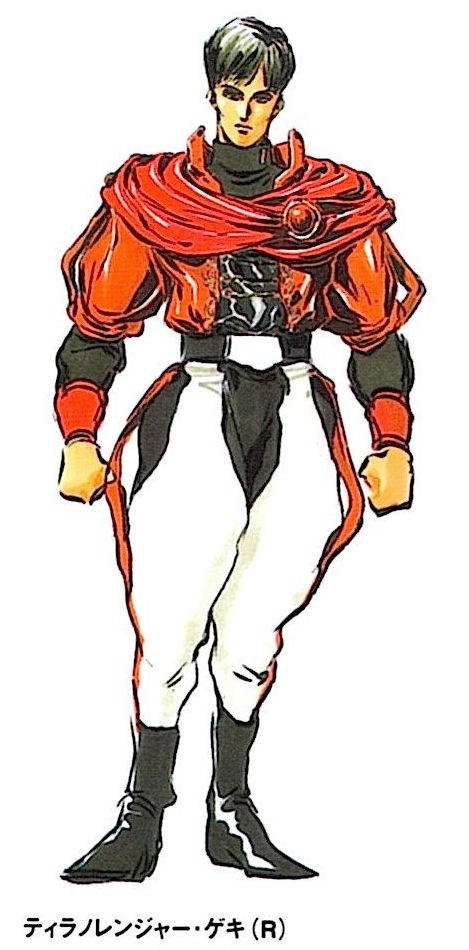
All of the races mentioned in the AD&D PHB are present in some form on Urth, but the differences are great enough that they'll be presented here on their own as if they were new ones. Of these, humans, elves, dwarves, and halflings are all primary player classes, while gnomes are a spoiler alert, and half-elves are treated a bit differently. While there are many differences between the races in terms of their primary homelands, general culture, and physical aspects, these attributes are far more diminished than in other AD&D worlds, leading to a homogeny between peoples that may make it difficult to distinguish between them at first glance, as the overlap in any of these areas is fairly significant. As a result, the role that race plays in the lives of the Urth people is very minimal, with there being no real cultural attitudes or prejudices based on them. The humanoids treat each other flatly as equals. In matters of cultural and hereditary identity, the nation a character belongs to is far more important when determining how other characters will percieve and treat them.
You'll notice that the changes to the races bring them all physically closer to each other, but aside from that and cleaning up some of 2nd edition's jank, they all seem to retain the classic traits that make them dwarves and elves and such. So why make so many changes that are mostly cosmetic? Well it's a flavor thing. First of all, the original Zyurangers were never intended to be different races, only Barzai and Gnome and the monster characters were distinct fantasy races while the peoples of the tribes were all, essentially, just humans. Dino Squad had already started the bit aboot the lore of Zyuranger being essentially an AD&D homebrew setting, and because Goushi is so much taller than the others, the follow up seemed obvious.
But it's not just a punchline, this setup really existed in the 80's and it extended all the way up to the Lord of the Rings movies which killed the trope dead by its really clever use of forced perspectives. Prior to this, though, there was a real dichotomy between the presentation of fantasy races in novels and games versus how they were portrayed in schlocky fantasy films and TV shows. You can say that dwarves are 4' tall all you like, but good luck finding an adult actor that size that isn't a little person. And, yeah, sometimes they did hire Warwick Davis, but you couldn't always get him. So the end result is, if you're Roger Corman and you want to cash in on the Conan movies' success, you're going to end up with a cast made up of people who are all 5-6 feet tall pretending to be wildly different species. It's Star Trek shit, everyone is a human, they just have different foreheads, or in the case of fantasy films, different ears.
Power Rangers also fell into this trap and it didn't start with Saban's meager budget either, the aforementioned Barzai and Gnome really just aren't very different from the Zyurangers aside from some light prosthetics. In the Saban versions, we got aliens like the Aquitians with dumb hats and flanged voices, Trey who's whole thing was just that they were three guys, and that one dude who had green hair. The intended flavor of "races" in this setting is exactly this. You are a bunch of human actors playing a cast of characters made up of people from strange and exotic fantasy cultures... but you don't have the kind of budget or resources to represent this in any way other than putting some Spock ears on the elves. Everyone is going to be within the range of normal human height - but still allowing for the possibility of landing Warwick Davis or Yao Ming - but their weird fantasy super powers are going to stay intact.
The racial requirements work a little differently here in that they're only requirements with the assumption that characters are adventurers. Technically, any person of any race can have any score (prior to ability score adjustments, of course), but especially stupid or weak characters simply don't spend their time going out and fighting monsters, and they certainly aren't chosen for such tasks by their tribe. This means that the function of these requirements is a little different from the base game. In AD&D, these requirements are an insane and objectively terrible baffling game design decision that doesn't make any fucking sense. Here, the requirements serve as both part of the bit and also a way to make sure player characters aren't garbage that can't do anything. As such, humans are included and have their own requirements. These reworked requirements are higher than usual, and are at least 6 for every stat in each race. Because of this, an additional method of stat rolling may be used as an addition to any of the other methods. In this supplementary method, any time a player makes a stat roll where all three results are below 4 (after taking out the lowest result in method V), simply re-roll the lowest result. Keep re-rolling dice in this way until at least one of them is 4 or higher. This will ensure no character has a score below 6.
| Ability | Human | Elf | Dwarf | Halfling |
|---|---|---|---|---|
| Strength | 8 | 6 | 8 | 7 |
| Dexterity | 8 | 8 | 7 | 10 |
| Constitution | 8 | 7 | 10 | 8 |
| Intelligence | 8 | 10 | 8 | 7 |
| Wisdom | 8 | 7 | 7 | 6 |
| Charisma | 8 | 8 | 6 | 8 |
Class restrictions for non-human characters are maintained, but because the classes available in the setting differ some from the vanilla game, the restrictions are likewise modified as noted for each race below. Level limits, however, are out. There's no reason for them, and although I guess it would still be funny, there's only so many horrid disgusting game design decisions I can grandfather in under the premise of "but that's the joke." There's absolutely no reason for level limits, it's a fucking insane idea and so it's just not here. Additionally, the class restrictions exist as a description of that races's general proclivity towards such a vocation in the first place, and so it's not actually completely absolute. So, it is possible for all races to take up any class, but this should be treated as a very rare case and the character should likewise have some backstory that explains how such a thing came to be. Any race-class combination outside the class restrictions should be taken up with the DM first in order to make sure it will fit into the framework of the story and characters.
Because of the considerable prosperity of the peoples of Urth, lifespans are far longer than our world, which extends even to humans. Because of this, and the less dramatic differences between the races, their maximum ages are much closer to each other that the races of regular AD&D. Additionally, aging works a little differently, because in this magical fantasy land 40-somethings aren't somehow instantly weaker. Wow, can you imagine? As such, there is no stat change for a character at middle age, and it is only at old age and older when stat reductions occur, and these reductions are moved up accordingly. Each stat adjustment is cumulatize, so a venerable character takes the adjustments for both veneral and old age. A character's "adventuring age" is essentially their physical maturity up to and including any cultural expectations their race may have concerning when it is appropriate for members of their kind to start fighting monsters. Additionally, while maximum ages are listed here for each of the races, abnormally long lived individuals pushing or even exceeding a thousand years are not unheard of or impossible. While such rare and special specimens aren't really appropriate for player characters and so shouldn't be viewed as an exception in the same was as potentially ignoring the class restrictions, a very ancient character could be used as an NPC. However, such an age is still quite unusual and it should not be factored into the life expectancy of the average person.
Old Age: -1 Strength, -1 Constitution, +1 Intelligence, +1 Wisdom
Venerable Age: -1 Strength, -2 Constitution, -1 Dexterity, +2 Wisdom
I have no idea, and I don't care, and I don't think it even matters for gameplay reasons. They weigh normal. Whatever normal is. Go look up a BMI calculator or w/e, I'm not fat shaming fantasy characters you can go do this part yourself.

Humans are the most populous race and can be found all throughout the two major continents and among all five nations, but their greatest population is within the lands of the Yamato Kingdom and particularly in their capital city Rexington. Humans share traits with all the other races of Urth, but in a diminished form, that gives them a kind of "jack of all trades, master of none" quality. They share the industriousness of dwarves, the artistic sensibilities of elves, and the pursuit of simple pleasures like halflings, but which, if any, of these motivations is the primary driving force is dependent on the individual human. As such, humans are more varied and individualistic than the other races tend to be, so defining them as a whole is difficult. Humans can take this "defining trait of having no defining traits" thing so far that they gain their only true unique trait of being the only race who can be multiple classes at once, or "multi-class." There are many subraces of human, but when you point that out you risk realizing that the whole "race" paradigm in TTRPGs is dangerously close to racism, so we're just gonna say most Urthian humans look Japanese because of the practical limitations of casting, but that your human character can look like anyone.
Possible Classes: Fighter, Hunter, Wizard, Mage, Princess, Cleric, or any combination thereof
Ability Adjustments: None
Height: 62+1d20 inches (5'3" to 6'10"; 6')
Nations: Yamato Kingdom (founders), all others (common)
Age
Adventuring Age: 17+1d12 (18-29; 24) years
Old Age: 100+2d20 (102-140; 120) years
Venerable Age: 200+1d100 (201-300; 250) years
Maximum Age: 300+1d100 (301-400; 350) years
Racial Abilities
Player Option: Rather than having no ability score adjustments at all, a human player can choose to take a +1 and -1 to any stats they choose. This character may not technically be "human" in terms of race, but would instead represent a character with a racial ancestry so muddled that their ability bonuses no longer have a clear line of descent and any other special racial abilities they may have inhereted are gone, making them essentially indistinguishable from humans. This could potentially go as far as having up to three sets of +1/-1 ability adjustments, so that each of the six ability scores are modified in some way. Characters like this will be culturally considered "humans" by the other people of Urth, but in practice are probably more like "half-everything" people. See below for more info on "half" races.
I personally just don't care for fantasy settings treating humans as 100% non-fantastical. It's stupid nonsense. So you're telling me it's a magical whimsical fantasy land of fairies and monsters and magic but most humans will die before Betty White? Bullshit. This is particularly infuriating because it ignores the tradition of fantasy humans living for hundreds of years that goes all the way to the bronze age. Which would be one thing if this was some obscure thing from a single myth of some long forgotten culture known only from a single site out in the imppossible-to-get-to mountain range, but it's in the fucking bible. Surely you're familiar with the bible? Methuselah lived to be almost a thousand years old... but mythological kitchen sink AD&D has humans absolute maximum lifespan only make it to 140? There are real life people who lived into their 120's, are you kidding me? This is seriously the best you can do for a FANTASY setting? Get fucking real, dude.
So obviously with the ubiquity of thise trope of several century old humans I was never going to ignore this in my own kitchen sink adaptation of a show that already has one of the most baffling backstories of all time. Despite the wealth of examples from bronze age mythology and "history" I could've used as a basis for the maximum age of Urthian humans, I perhaps unsurprisingly turned to a Toho monster movie, specifically Latitude Zero and its over 200 year old characters Captain McKenzie and Malik. This felt appropriate because the Urth of this setting is a peaceful, Eden-like utopia without the roots of evil such as greed and obsession with power, where scarcity isn't really a problem and people have no reason to not want to work together. This is pretty much the same as what LZ's inhabitants lives are like, and it was more appropriate than Star Trek which is a harder sci-fi take and only extends lifespans by a few decades at most, and also because as an Ishiro Honda joint it just makes more sense to me intuitively. So going off McKenzie's age, we know that despite his age he's still a pretty buff grandpa, but he's also LZ's only real military, so of course he's still buff and that's probably not a representation of the average 207 year old. So the understanding here is that in the world of Latitude Zero McKenzie is kind of a Jack LaLane figure, and its his fitness that's above average, not his longevity or health. Based on that, and with a smattering of "but I want the elderly wiseman characters to be REALLY old," we have our new fantasy human lifespan, which ages the same as we do up to adulthood (late 20's/early 30's), and then peters off at middle age for a while and doesn't really start entering the old people zone until at least a century.
If you're looking to play a character with a lifespan that resembles us, humans from the waking/analog/non-fantasy dimension world, I have those too. They're just called "halflings," since, spoiler alert, Tolkein's Hobbits were meant to represent the ordinary people who's lives were caught up in the war.
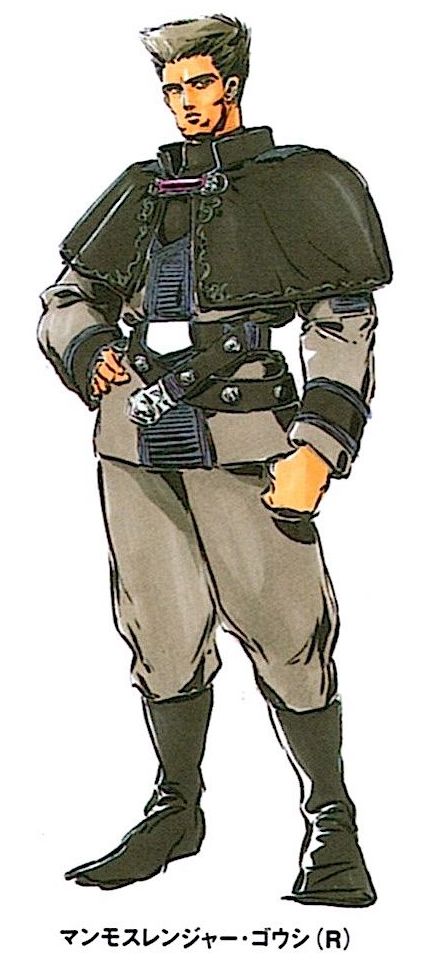
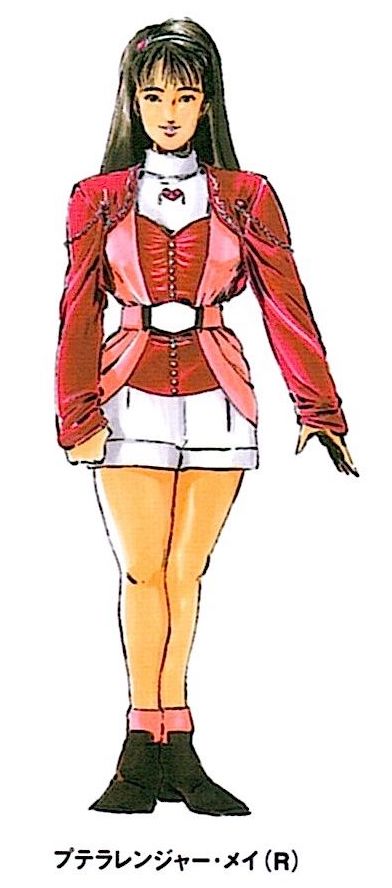
Elves are the slender and graceful race, concerned primarily with contemplative lives focused on learning and artistic endeavors. They're the Vulcans of Urth. Unlike the more rowdy and rough dwarves, elves are sophisticated and high brow. Their towns usually have a library or theater as their cultural center. Elf settlements are mostly up high, built into the trees and mountains. There are two major subraces of elves, the mountain elves and the high elves. All elves are clustered mainly on the northern continent of Crania, particularly in the nations of Sharma and Lithia, which were founded by the elves, but some are known to live amongst the peoples of Dentaria as well. The different subraces of elf are physically almost indistinguishable - high elves tend to have a slightly darker complexion - but their culture and priorities make it easy to tell them apart.
Mountain Elves: Said to the descendents of the original elves, they are the least common outside of their ancestral home of the Panorbital Mountains. Among all the peoples of Urth, the mountain elves are by far the most serious and spiritually devoted to god and the holy beasts. They are a very skilled people who spend their lives studying among their elaborate mountain cave palaces, who are humble and generous in aspect. Because of the increased value they place on personal growth and their devotion to the temples of their patron Holy Beast, Dontheos, mountain elves are the least traveled and diffuse peoples of Urth, and the most isolationist. Do not, however, mistake this isolation as xenophobia or a reflection on their attitudes towards the other races, in fact, their kindness and generosity is second only to the halflings of Daim.
High Elves: High elves are said to be descendents of the first of the original elves who dared to venture beyond the mountain peaks. The evidence of this seems clear in the fact that their ancestral land of Lithia was founded in the western edge of the Panorbital Mountains, at the foot of Mt. Anastegos. High elves share the fixation on personal growth, learning, and art of their eastern cousins, but are more gregarious and sociable owing to the warmer climate that keeps them from being ice cave hermits. Because of this, high elves are more prone to wandering throughout the lands of Urth and immigrating to other nations just from sheer curiosity alone. Because of this, while they are most populous on the northern continent of Crania, they can be found as far south as the jungles of Daim. High elves have turned the innate desire to learn as much as they can, and turned it outwards, so that they find more value in observing the lives and culture of other people than in their own soul searching.
Possible Classes: Fighter, Hunter, Wizard, Princess
Ability Adjustments: +1 Intelligence, -1 Strength
Height: 65+1d20 inches (5'6" to 7'1"; 6'2")
Nations (Mountain Elves): Sharma Principality (founders), Lithia & Yamato (rare), Etoffe & Daim (very rare)
Nations (High Elves): Lithia Principality (founders), Sharma & Yamato (common), Etoffe & Daim (uncommon)
Age
Adventuring Age: 30+1d100 (31-130; 80) years
Old Age: 250+1d100 (251-350; 300) years
Venerable Age: 410+2d12 (412-434; 420) years
Maximum Age: 500+2d100 (501-700; 600) years
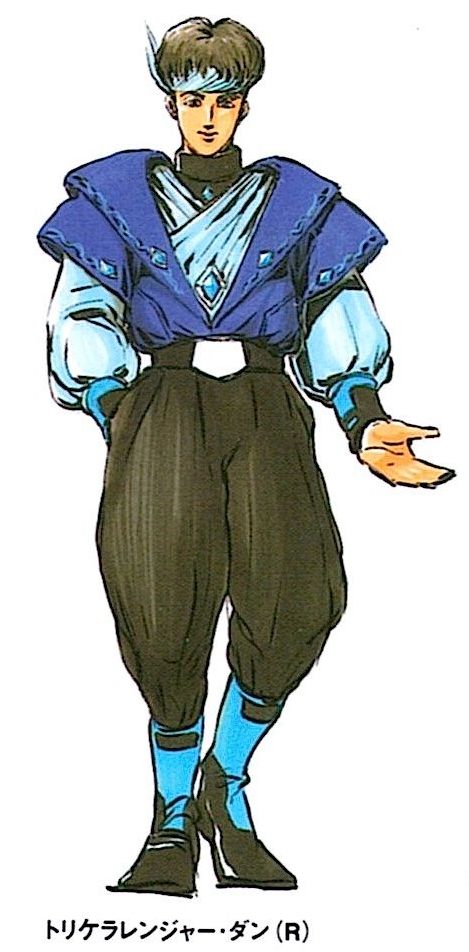
Dwarves are hearty and tough short kings and shawties, a proud warrior race with an industrious side from their long cultural history of digging holes. Dwarves are very fossorial and don't build very high above ground because most of their infrastructure is below the surface. They are very fond of sports, up to and including martial arts, and arenas are usually the cultural center of their towns. Dwarves are in some ways the opposite of elves, being much more brash and concerned with the practical side of craftsmanship over the elves more intellectual pursuits. There are two subraces of dwarves, hill (or northern) dwarves and southern (or sand) dwarves. Again, subraces don't really have game mechanics in 2nd edition so it's your dwarf is gonna be the same either way.
Hill Dwarves: These dwarves dwell primarily aroond and underneath the mountains and hills of Crania, but over time expanded down into the Grear Surangular Desert of northern Dentaria. Friendly and gregarious, hill dwarves don't get on as well with elves as they do humans, and so they are less often found digging into the mountains of Sharma and Lithia than they are the hills of Yamato. Hill dwarves are unique in that they are the only one of the 6 primary races of Urth to never found their own kingdom. The reasons for this seem obvious on paper - they have a very strong relationship with the humans of Yamato and have no interest in replacing that kingdom with their own - but it's well known that dwarves arrived in Urth long before the humans did, and had ample time to establish their own nation. The current consensus is simply that the lifestyle home lands of hill dwarves simply don't mesh well with the idea of uniting under a single nation. They are the most competitive of all the races, and they have very little interest in government, nor did the resident Holy Beast Gnatheos inspire much reverance in them. So they just kind of do their thing.
Southern Dwarves: When the hill dwarves migrated south, they had to adapt to face the challenges of the Great Surangular Desert. Their fondness for digging and infrastructure served them well, and so they were the only race able to do the necessary work to civilize the desert and found the great republic of Etoffe. Although the desert can be a harsh place, the underground adobe cities of the southern dwarves are luxurious, cool in the day and cozy in the night, full of life and culture, where scarcity comes to die. Because of their reliance on their infrastructure to prosper, however, southern dwarves are much more disconnected from each other then hill dwarves. Rather than exacerbate their competitive nature, however, it actually made them more self-reliant, so that meeting a southern dwarf is similar to meeting a mountain elf that knows how to party. Physically, southern dwarves generally have much darker skin than hill dwarves, but are otherwise identical. Southern dwarves can often be found mingling with the hill dwarves of the north or even further south in the jungles of Daim, but don't often travel much further than that.
Possible Classes: Fighter, Princess, Cleric
Ability Adjustments: +1 Constitution, -1 Charisma
Height: 60+1d12 inches (5' to 6'; 5'6")
Nations (Hill Dwarf): Yamato & Etoffe (common), Sharma & Lithia (uncommon), Daim (very rare)
Nations (Southern Dwarf): Etoffe Republic (founders), Yamato & Daim (common), Sharma & Lithia (very rare)
Age
Adventuring Age: 25+1d20 (26-45; 35) years
Old Age: 150+2d20 (152-190; 170) years
Venerable Age: 200+1d100 (201-300; 250) years
Maximum Age: 350+2d100 (352-550; 450) years
| Save Bonus Table | |
|---|---|
| Constitution | Saving Throw Bonus |
| 4-6 | +1 |
| 7-10 | +2 |
| 11-13 | +3 |
| 14-17 | +4 |
| 18-19 | +5 |
| Stupid Slope Chart | |
|---|---|
| Detection | Roll on 1d6 |
| Grade/slope in passage | 1-5 |
| New tunnel/passage construction | 1-5 |
| Sliding/shifting walls/rooms | 1-4 |
| Stonework traps/pits | 1-3 |
| Determine depth underground | 1-3 |
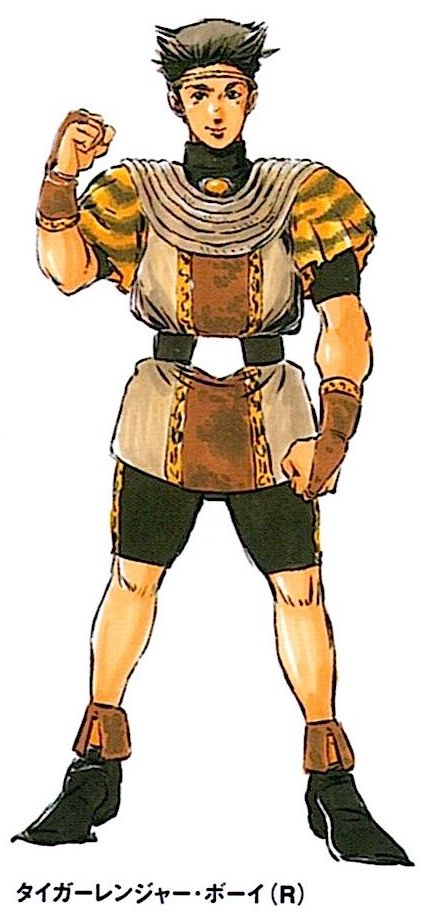
Somewhere, deep in the jungle, are living some little men and women. They are our past. And maybe... maybe they are... our future. As much as elves love art and philosophy, dwarves love woodworking and watchin' the game, and humans love having no interesting defining characteristics, no other race on Urth has as much passion for life as the halflings. They are the smallest and most energetic of the Urthian peoples, who spend their lives in an almost hedonistic pursuit of happiness. Sometimes known as the "jungle people," the halflings came to Urth in the vast Mandibular Rainforest, and so never had many cares other than what they were going to eat for Second St. Matthew's Meal. For a long time the Daim Tribe were so content that they remained uncontacted by the other peoples of Urth, and it wasn't until the curious high elves living in the Panorbital Mountains heard tales of these strange little jungle people from migratory pteranodons that any halfling considered leaving the jungle to see other places. Now, of course, they can be found all over the place, taking enjoyment of all the pleasures of the whole Urth. As such, your typical modern halfling has been somewhat tempered by city life, as they are very open to learning new things - especially if it's something fun - but even in the temperance remains a firey passion for life. Although halflings have no recognized subraces, they are somehow the most diverse of all the races, and come in a vast array of flavors and identities that fall well outside the more conservative personal expression of the other races, even humans. No one lets their freak flag fly higher than a halfling.
Possible Classes: Fighter, Mage, Cleric
Ability Adjustments: +1 Dexterity, -1 Wisdom
Height: 55+1d12 inches (4'8" to 5'7"; 5'3")
Nations: Daim Tribe (founders), Etoffe & Yamato (common), Lithia (uncommon), Sharma (very rare)
Age
Adventuring Age: 15+1d20 (16-35; 25) years
Old Age: 64+1d12 (65-76; 70) years
Venerable Age: 90+1d20 (91-110; 100) years
Maximum Age: 120+2d100 (122-320; 220) years
AD&D presents the case of half-human half-elf characters as a playable race, but the core PHB fails to mention all the other possibilities, leaving half-elves as a weird orphan race and an idea that is unfinished. Maybe it has something to do with the vanilla races being too different, but that's not a good enough excuse, and so we'll complete that chart here so that all possibilities are accounted for. Given that subraces have no mechanical differences, there are 6 possible "half-races," human-elf, human-dwarf, human-halfling, elf-dwarf, elf-halfling, and dwarf-halfling. The following rules are used when determining the attributes of half-races:
Outside of these specifics, half-races can be from anywhere and are kind of a wild card. The peoples of Urth are so thoroughly intermingled that third- and quarter-races are possible as well, but at this point you'd be better off treating characters like this mechanically as variant humans as noted in the "Player Option" for that race.